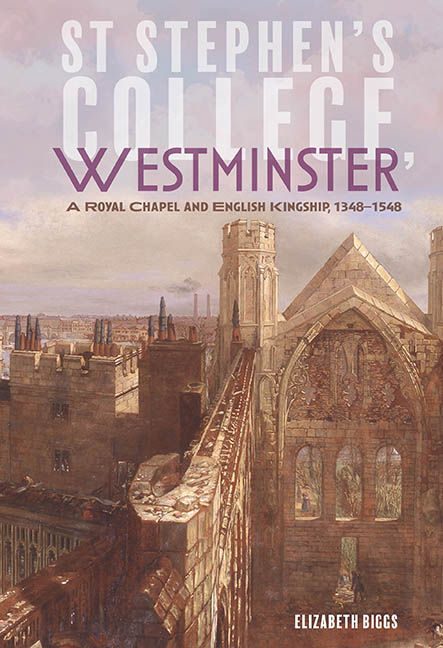Book contents
- Frontmatter
- Contents
- List of Illustrations
- Acknowledgements
- List of Abbreviations
- Preface
- Introduction
- 1 Finding a Place Within Westminster, 1348–1394
- 2 Magnificence and Difficulties under Richard II, 1377–1399
- 3 Weathering Political and Economic Storms, 1399–1485
- 4 A New Kind of Court? Display, Pageantry and Worship, 1471–1536
- 5 Responding to the Reformation, 1527–1548
- Conclusions
- Bibliography
- Index
- Miscellaneous Endmatter
5 - Responding to the Reformation, 1527–1548
Published online by Cambridge University Press: 28 April 2020
- Frontmatter
- Contents
- List of Illustrations
- Acknowledgements
- List of Abbreviations
- Preface
- Introduction
- 1 Finding a Place Within Westminster, 1348–1394
- 2 Magnificence and Difficulties under Richard II, 1377–1399
- 3 Weathering Political and Economic Storms, 1399–1485
- 4 A New Kind of Court? Display, Pageantry and Worship, 1471–1536
- 5 Responding to the Reformation, 1527–1548
- Conclusions
- Bibliography
- Index
- Miscellaneous Endmatter
Summary
‘My lorde if in ye courte you do keep such holly dayes & fastynge dayes as be abrogated, when shal we p[er]suade ye people to ceasse fro[m] kepynge they[m]? For the kynges own house shal be an example unto al ye realme to break his own ordinance.’
This letter from the archbishop of Canterbury, Thomas Cranmer, to Thomas Cromwell in August 1537 expressed his exasperation with the Chapel Royal and its lack of conformity to the religious changes and abolition of saints’ days of the Henrician Reformation. Here he pointed to the possibilities of the Chapel Royal, and the royal chapels more generally in showing correct practice at a time when royal ordinances were in theory radically reshaping the country's experience of worship. By this point the Chapel Royal was firmly established elsewhere, at the great standing houses and when at Westminster at Whitehall rather than the old palace. But the same complaint could have been levelled at St Stephen's College, still visibly one of the king's chapels, and one that the needs of the Reformation had reinvigorated. The college's responses to the liturgical demands of the Reformation were equivocal and often surprisingly reluctant given its status within what continued to be the royal palace devoted to administration. Ten years before the letter, when the divorce case that would become the impetus for Henry VIII's break from Rome began, St Stephen's had not been at the forefront of the English Church's theology; Stephen Gardiner canvassed the universities rather than the secular colleges. But as the king came to need to reward the priests who were creating the structures of his new Church, St Stephen's became a throughroad to the episcopacy for such as wished promotion. In this final phase in the existence of St Stephen's College, routine personal kingship began to be disassociated from the institution because the king was no longer habitually resident at the palace, however much time he spent at Whitehall. It was that disassociation that allowed the college to become redundant and to be dissolved in 1548.
- Type
- Chapter
- Information
- St Stephen s College WestminsterA Royal Chapel and English Kingship, 1348–1548, pp. 182 - 211Publisher: Boydell & BrewerPrint publication year: 2020

